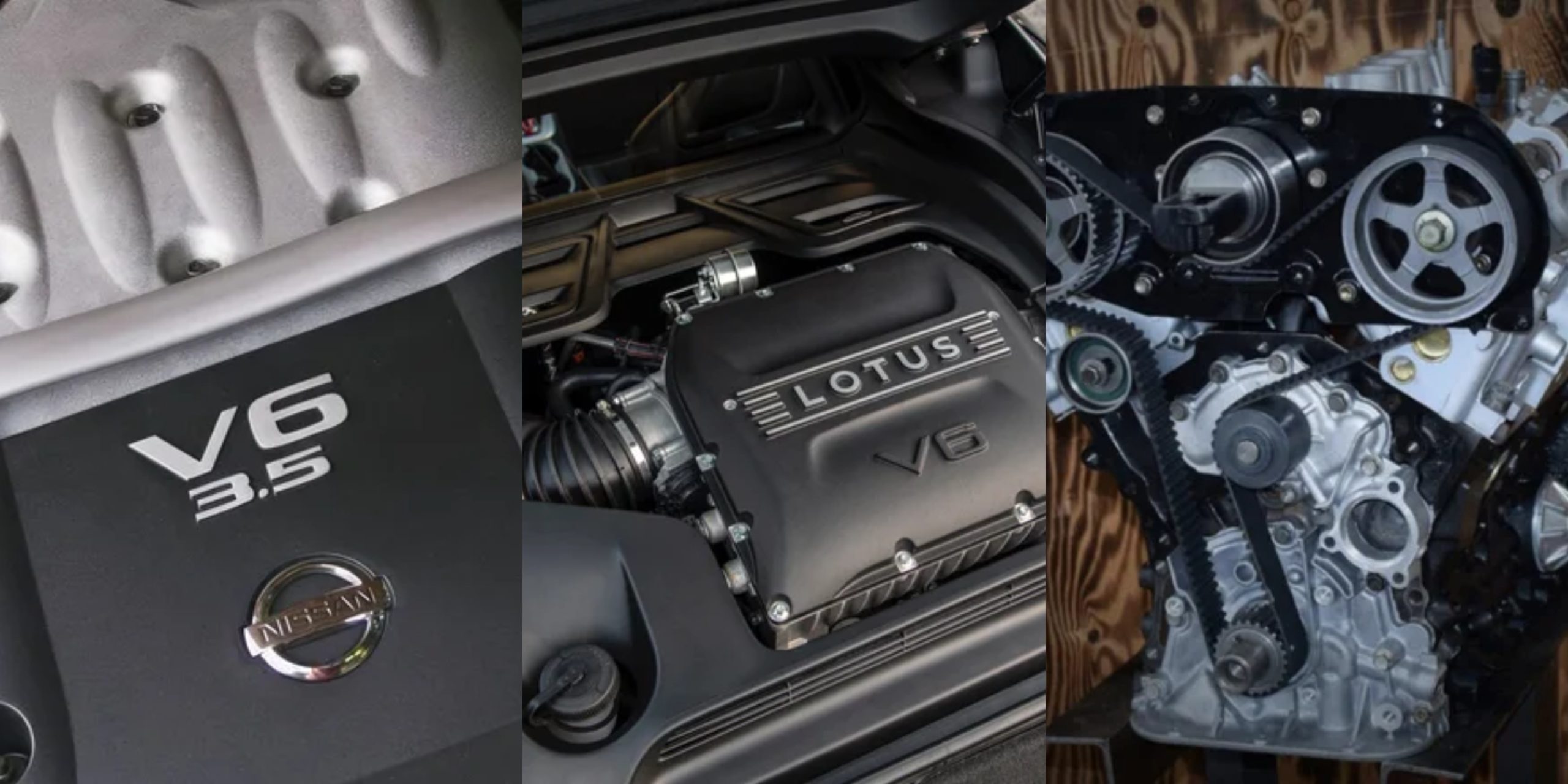Six-cylinder engines have been around for more than a century and have remained a fundamental part of the automotive world ever since. From practical family vehicles to high-performance sports cars and rugged work trucks, the six-cylinder engine has proven to be an incredibly adaptable powerplant.
BMW, for example, has long embraced the inline-six configuration—not only in cars but also in aircraft—demonstrating the engine’s versatility and enduring appeal. This adaptability has helped cement the six-cylinder as a go-to choice for many automakers over the decades.
One of the key reasons for its popularity is that the six-cylinder strikes a solid balance between the efficiency of a four-cylinder and the raw power of a V8.
While the automotive industry is now shifting toward smaller engines, hybrids, and electric vehicles to meet fuel economy and emissions standards, the six-cylinder engine still holds a special place. As these engines gradually phase out, it marks the end of a truly remarkable era in automotive engineering.
That said, not all six-cylinder engines are created equal. Like any category of engine, the six-cylinder has had its highs and lows.
Some have stood the test of time, becoming legendary for their reliability and performance, helping shape the identity of entire car brands. Others, however, have been notorious for mechanical issues and costly repairs.
A V6, for instance, often offers the best of both worlds—more power than a four-cylinder without guzzling fuel like a V8. But there’s a catch: reliability can vary significantly.
On paper, a V6 might boast impressive horsepower and cutting-edge features, but in real-world use, some are plagued with problems. From timing chains that snap and destroy engines to excessive oil consumption that drains your wallet, certain V6 engines have become infamous for all the wrong reasons.
As a car owner, engine trouble is the last thing you want. While modern engines are generally more durable and efficient than their predecessors—and with proper maintenance, many can last well over 200,000 miles—not every engine will go the distance. That’s why it’s important to know not only which V6 engines to admire but also which ones to avoid.
In this article, we’ll take a look at both sides: the most reliable six-cylinder engines that became icons, and the worst V6s that left owners frustrated and mechanics busy. Whether you’re in the market for a vehicle or just a fan of automotive history, this overview will help you appreciate the legacy—and the lessons—of six-cylinder engines.
Also Read: 10 Vehicles for People Who Hate Going to the Mechanic
Best V6 Engines
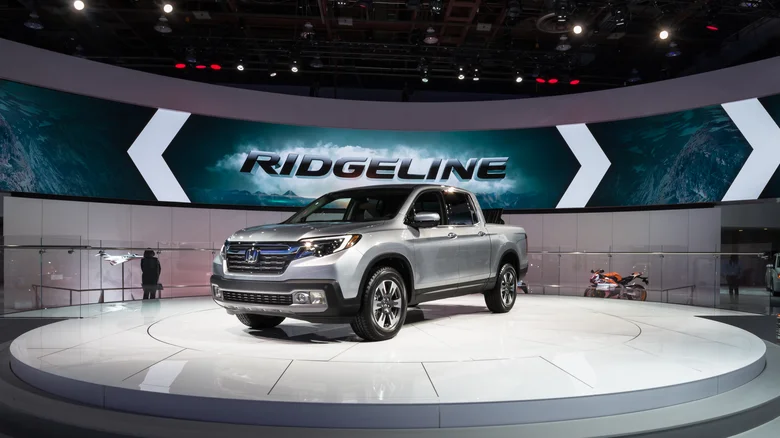
Honda J35 V6
Let’s begin with the Honda J35 3.5-liter V6 engine, which is considered one of the best engines Honda has ever created. It was first released in 1998 and has stayed an important part of Honda’s engine options ever since.
You’ll mostly see it in Honda’s bigger vehicles, like the Honda Ridgeline, Honda Pilot, and Honda Passport. Both car buyers and Honda itself clearly think highly of this engine.
Honda continues to put it in new models, and customers still want cars that have it. In fact, Honda used the newest version of the J35, called the J35Y8, in the 2023 Honda Pilot.
There are three main versions of the J35. The first one was the J35A, which was made from 1998 to 2008. Next came the J35Z, which was produced from 2006 through the 2017 model year. Then came the J35Y, which started in 2013 and is still being used today.
Each of these versions has several different types, which makes it a bit tricky to keep track of all of them. Still, even the least reliable ones are better than many other engines, according to most experts.
One big reason this engine has lasted more than twenty years is that it’s dependable. Of course, no engine is without problems, and the J35 does have some issues. But most of them are not serious and are fairly easy to fix.
One common issue in some versions of the J35 is the VCM system, which can sometimes lead to oil leaks. Replacing the old gaskets usually solves the problem. It’s pretty normal for J35 engines to reach around 200,000 miles without any major trouble, and there are even some that last much longer than that.
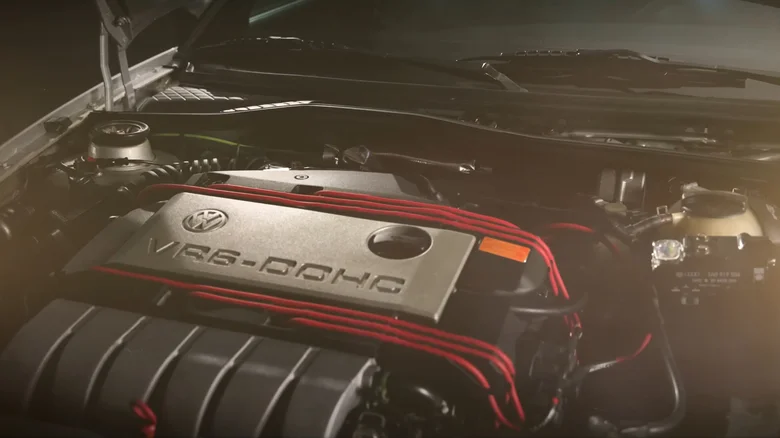
Volkswagen VR6 (1991–2024)
Is it an inline-six? Is it a V6? You can call Volkswagen’s VR6 whatever you want, but that doesn’t change the fact that it’s one of the most well-known six-cylinder engines ever made.
Even though it’s not a standard V6, its design still creates a tight “V” shape. Volkswagen named it the V-Reihenmotor-6 (V-inline-six), and with a 15-degree angle between the cylinder banks, it earns a place on this list.
So, why did Volkswagen choose the VR6 design? The main reason was to keep the engine small. It was almost as compact as a four-cylinder engine, which made it possible for Volkswagen to use it in front-wheel-drive compact cars like the Corrado — one of seven models that had a VR6 engine.
The VR6 also had better balance than a regular inline-four, which led to smoother and more refined driving.
The first VR6 engines were 2.8-liter and 2.9-liter versions, depending on the country, and they produced between 140 and 188 horsepower. Later, Volkswagen added bigger versions, like the 3.6-liter engine in the B6 Passat R36, which delivered 295 horsepower.
Volkswagen continued making the VR6 until 2024, when the 3.6-liter version used in the Atlas SUV was replaced with a 2.0-liter turbocharged four-cylinder engine.
That change let down many long-time Volkswagen fans, mostly because of the VR6’s special sound. It had a deep and strong tone at low speeds, and at higher RPMs, it made a raspy but smooth sound as air entered the engine. It’s still one of the most recognizable and full-of-personality six-cylinder engines ever made.
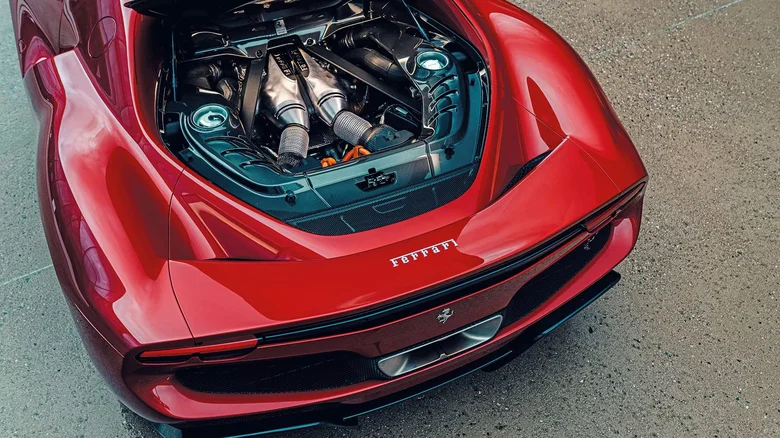
Ferrari 296 GTB 3.0 Twin Turbo V6 Hybrid (2021–Present)
A lot of people think turbocharged engines don’t sound as good as engines without turbos. While turbos do add a lot of power, they usually make the engine and exhaust noise quieter. But if you hear the Ferrari 296 GTB close to redline, that idea might not seem true anymore — especially because this car is a hybrid.
Yes, the high-revving V8 in the 458 sounds better. But there’s no question that Ferrari did a great job with the 3.0-liter twin-turbo V6 in the 296 GTB, which uses a 120-degree layout.
You still hear the exciting sound that Ferrari is known for. It sounds exciting, strong, and full of feeling, with a sharp tone as the RPMs go up. It may be a little quieter than the V8 in the 458, but for a twin-turbo V6, it still sounds very good.
The sound becomes even more special when you look at how much power it makes. By itself, the twin-turbo V6 produces 654 horsepower and 546 lb-ft of torque. With the help of a 165-horsepower electric motor, the full output reaches 819 horsepower, all going to the rear wheels through an eight-speed dual-clutch transmission.
As you’d expect, the 296 GTB is extremely fast in a straight line, getting from 0 to 60 mph in only 2.4 seconds. Its top speed of 205 mph is very impressive. And since it’s a mid-engine Ferrari, the 296 GTB handles corners with amazing accuracy.
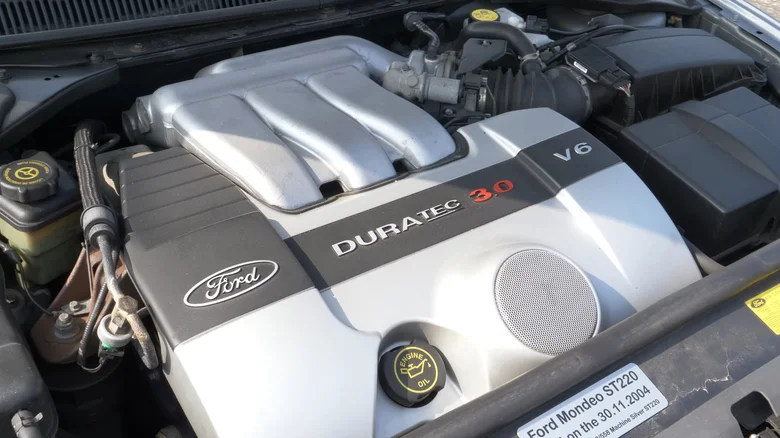
Ford Mondeo ST220 3.0 Duratec V6 (2001–2007)
Ford had a great-sounding V6 engine in the 1990s. Called the Duratec, this 60-degree 3.0-liter engine was built to take the place of the older 3.8-liter V6. It was quite modern for its time, featuring dual overhead cams, four valves per cylinder, sequential multipoint fuel injection, and cast-iron liners in the cylinders.
Ford used this engine in several vehicles, including the Taurus and Mercury Sable, and later in cars such as the Jaguar S-Type, Lincoln LS, Mazda 6, and the European Ford Mondeo ST220. In 2006, a version with variable valve timing was added for the Ford Fusion, Mercury Milan, and Lincoln Zephyr.
The Duratec V6 had strong performance, making 224 horsepower and 203 lb-ft of torque in the Mondeo ST220. This let the car go from 0 to 60 mph in just 6.8 seconds, which was quick for a front-wheel-drive sedan with a six-speed manual transmission.
What really made the ST220 fun to drive was its sound. The Duratec V6 had a deep and rich tone at lower engine speeds, and the sound grew steadily stronger as it neared the 6,800-rpm redline.
It had a tone that reminded people of racing, which made the drive more exciting. The sound was bold and aggressive, but still smooth. Having a manual gearbox made the whole experience even more enjoyable.
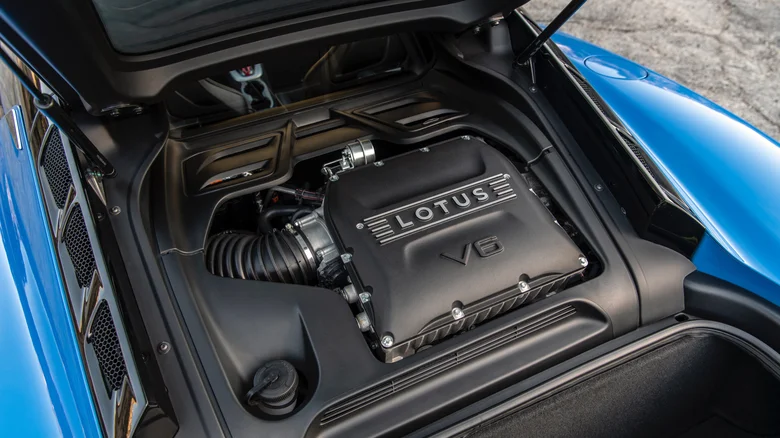
Lotus Emira Toyota-Sourced 3.5 Supercharged V6 (2023–present)
The Lotus Emira looks like a smaller version of a high-performance exotic car. It has sharp styling, a unique shape, great proportions, and is easily one of the most exciting sports cars to come out in recent years. Rather than only chasing high power numbers, it focuses more on what really makes driving fun.
Like other mid-engine Lotus cars made for enjoyment, the Emira performs really well on twisty roads. Its hydraulic steering feels just right and gives clear responses from the road.
It goes around corners without leaning and feels very steady. The car even gives you signals when the tires start to lose grip, so you can drive with full trust in its handling.
Whichever engine you choose, the Emira is still quick in a straight line. The 400-horsepower, 2.0-liter turbo four-cylinder from AMG can go from 0 to 60 mph in 3.8 seconds. But its sound is not very loud, and it only comes with a dual-clutch automatic transmission.
For people who like to be more involved while driving, the 400-horsepower, 3.5-liter supercharged V6 from Toyota may be the better option. It comes with a six-speed manual transmission.
Even though the gear shift isn’t the most accurate, it still adds more connection between the driver and the car. It goes from 0 to 60 mph in 4.2 seconds, so it’s not much slower than the turbo version.
The supercharged V6 sounds more exciting too. It’s pretty quiet at low engine speeds, but when you go past 3,000 rpm, it starts to really stand out. The Toyota engine makes a loud, mechanical, high-pitched sound that can give you goosebumps.
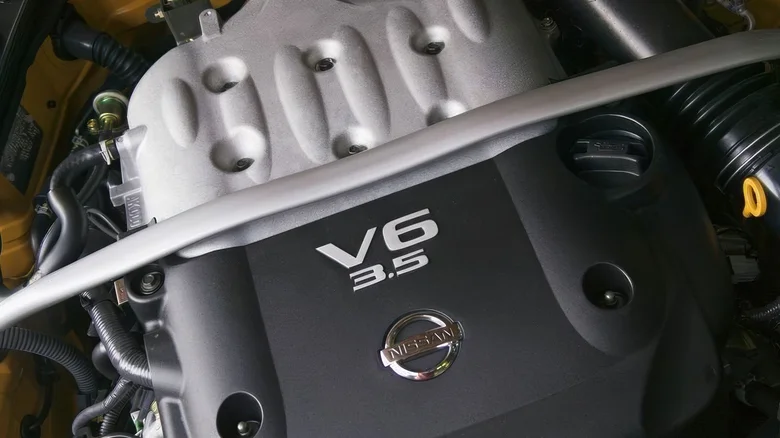
Nissan 350Z 3.5 V6 (2002–2009)
Nissan’s Z series has one of the longest and most well-known histories in sports cars, right alongside names like the Porsche 911, Ford Mustang, and Chevy Corvette. After taking a break from 1997 to 2002, Nissan brought back the Z car with the 350Z, and people had high hopes for it.
Nissan used a front-to-mid engine layout with a naturally aspirated V6. Even though it didn’t have a turbo, the car still gave strong performance.
The 3.5-liter V6 made 306 horsepower after an update in 2007. It came with a six-speed manual as standard, and a less powerful five-speed automatic was offered as an option.
The manual version had something more — it could rev up to a fun 7,500 rpm, while the automatic version topped out at 6,600 rpm. Taking the engine close to its limit didn’t just give fast acceleration (0–60 mph in 5.4 seconds), it made a great sound too.
Even though it’s a V6, the VQ35HR engine sounds like it has more cylinders. It has a deep and full tone at lower engine speeds, a strong and rumbling sound in the middle, and as it nears the redline, it gets raspy and more aggressive — exactly what you’d want from a sports car.
It has a growl full of power. Getting that kind of sound and excitement in a car at this price was really impressive.
Worst V6 Engines
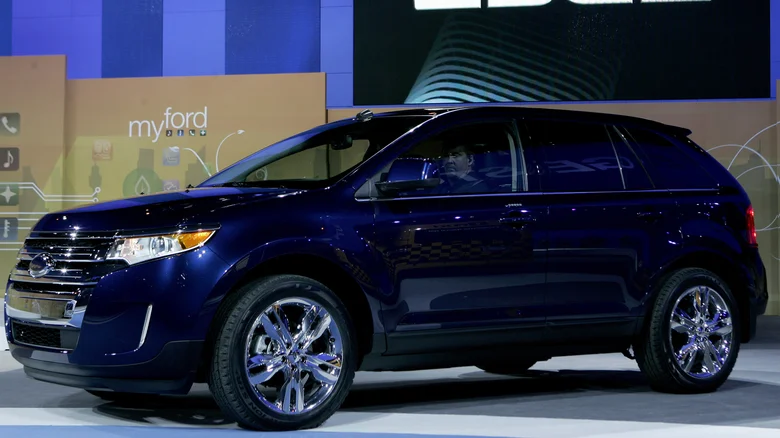
Ford 3.5L Duratec V6
Even though Ford engines are often dependable, this one turned out to be a rare mistake. Found in models like the 2007 to early 2011 Explorer, Flex, Taurus, Fusion Sport, and Edge, this engine actually won some awards when it was first released. But Ford’s choice to put the water pump inside the engine ended up being a big problem for many car owners.
Most engines have the water pump on the outside, making it easier to replace. But Ford used an internal, chain-driven water pump. The main issue wasn’t just that the water pump could stop working—since all mechanical parts wear out eventually—but what happened when it did.
As the pump wore out, its bearings would start to break down, causing the pump to move out of place and break the seal. When that seal leaked, coolant would leak into the crankcase and mix with the engine oil, then move throughout the engine. This created a thick, dirty fluid that made the engine run poorly.
When oil is mixed with coolant, it can’t do its job of protecting key engine parts like the bearings, cam journals, and rod bearings. These parts then wear out faster than they should. Sadly, many owners didn’t notice anything wrong until signs like losing coolant or the engine getting too hot appeared.
By then, serious damage was often already done. If it wasn’t taken care of right away, the engine might stop suddenly while driving at high speed or lose power slowly until it stopped working completely. The cost to replace the water pump was much higher than normal because of where it was located.
Many frustrated Flex and Edge owners took legal action against Ford. But the court dismissed the lawsuit, so a lot of people were stuck with very expensive repair bills—sometimes over $2,000.
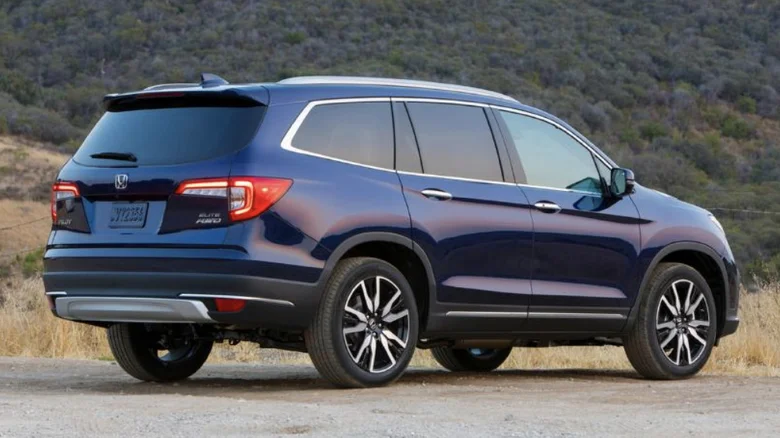
Honda 3.5L J35Y6
The J35 V6 series has usually been seen as one of Honda’s most trusted engines. But in November 2023, Honda had to recall nearly 250,000 vehicles because of a design mistake that could lead to early engine failure. This recall included some Honda and Acura models such as the Pilot, MDX, and TLX that used the J35Y6 engine.
A government investigation by the National Highway Traffic Safety Administration (NHTSA) suggests the problem might affect up to 1.4 million vehicles.
The issue came from a mistake made during the making of the crankshaft. Honda explained that the machine settings used to grind the crankshaft weren’t correct. This led to crank pins that were shaped incorrectly.
Because of this, the connecting rod bearings would wear out much sooner than normal. Honda received 1,450 warranty claims about the problem but believes only about 1% of the recalled engines actually have the issue.
Still, the results of this problem can be very serious. If a connecting rod bearing fails, the engine might shut off, overheat, or suffer extreme damage inside.
In the worst cases, the engine could stop working while the car is moving, which could lead to an accident. Honda did offer free repairs or engine replacements through the recall program.
However, even after the recall, NHTSA got at least 173 reports about engine failures in cars that weren’t part of the original recall. Because of this, they started a formal investigation (RQ24-013) in November 2024.
This investigation is checking 2016 to 2020 Honda and Acura vehicles to see if more cars should be included. If it turns out that the issue affects more vehicles, Honda may have to issue another recall.
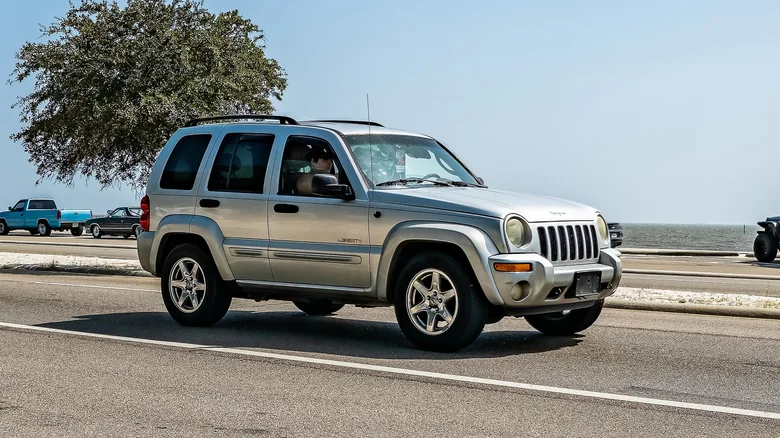
Chrysler 3.7L V6
The Chrysler 3.7L V6, used in some Jeep and Dodge vehicles, is known for not being very dependable. One major problem is the failure of the valve seats. Normally, valve seats stay firmly in place in the cylinder head, but in this engine, too much heat can make them come loose.
When that happens, the engine loses compression, starts to misfire, and runs roughly at idle. If the seat completely breaks, it can damage the piston and cylinder, causing the engine to stop working entirely.
Heat is a constant issue with this engine. It has a weak piston ring land design and oil passages that don’t let oil drain back properly, which makes the engine run hotter than it should. That extra heat breaks down the oil more quickly, which leads to sludge forming.
The sludge blocks oil passages and makes it harder for the oil to do its job. Over time, this causes the engine to overheat and wear out faster. A blocked PCV valve makes this worse by trapping gases that thicken the oil and create even more sludge.
Another issue is the single-valve spring setup. While most truck engines use two springs per valve to last longer, Chrysler used just one. This makes it more likely that the springs will break. If one does, the engine can lose compression, and if a valve drops into the cylinder, it can completely destroy the engine.
The hydraulic lash adjusters, also called lifters, are another weak point. These parts are meant to keep the valves moving smoothly, but they can get stuck or collapse because of sludge and carbon buildup.
When this happens, you may hear a ticking sound or notice the engine idling roughly. If a lifter sticks, it can knock a rocker arm out of place, causing one of the valves to stop working and making the engine run even worse.
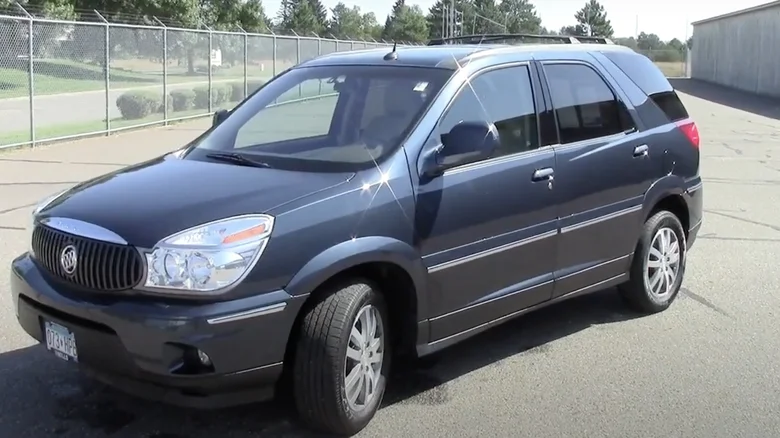
GM 3.4L V6
This engine, found in cars like the Chevrolet Impala, Pontiac Grand Am, and Buick Rendezvous, has a long history of problems. Many of the issues are related to a poor gasket design and the use of Dex-Cool coolant, which caused more damage than help.
GM introduced Dex-Cool, an antifreeze based on Organic Acid Technology, in 1996 and claimed it would last a long time and protect better than the old green antifreeze. But by the early 2000s, a lot of GM owners started having gasket failures, especially with the 3.4L V6 engine.
The main issue was when coolant levels got too low and let air into the system. That caused Dex-Cool to turn acidic, which started eating away at the black plastic parts of the gaskets and caused leaks. Later, it was found that an additive in Dex-Cool called 2-EHA actually made the gaskets weaker, making the issue worse.
This problem ended up costing owners a lot of money. Replacing a broken intake gasket could cost between $800 and $1,500, and fixing a head gasket could be anywhere from $1,000 to $3,000, especially if the engine got too hot and the aluminum heads warped.
Things got so bad that GM faced a class-action lawsuit, and in 2008, they agreed to pay back some of the money for intake gasket repairs for certain model years.
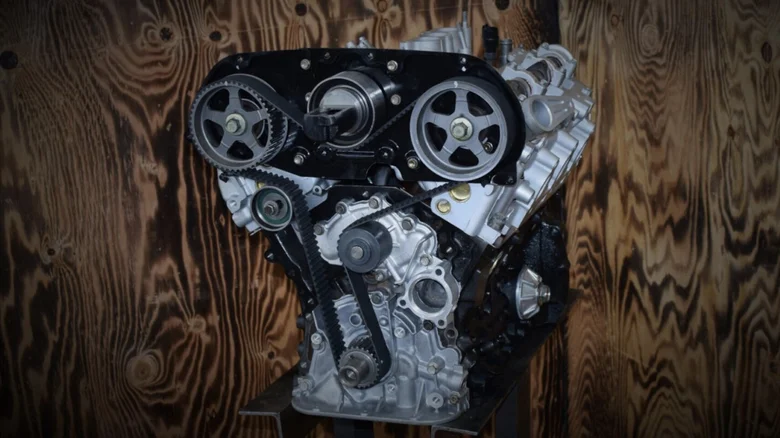
Toyota 3VZ-E
Toyota is known for making some of the most dependable cars, but the 3.0-liter 3VZ-E V6 turned out to be one of the more problematic engines the company ever made.
A problem in the way the cooling system was designed causes the coolant to flow unevenly, which creates hot spots that wear down the head gasket faster than normal.
On top of that, the exhaust crossover at the back of the engine adds even more heat to an area that is already under pressure. As the gasket gets weaker, coolant can leak into the cylinders, causing the engine to get too hot.
Then there’s the issue with performance. Even though it’s a 3.0-liter engine, the 3VZ-E only produces 150 horsepower and 180 lb-ft of torque, which isn’t enough power for a heavy 4Runner or pickup truck. Many owners say the engine feels slow, which led to its nickname, “3.slow.”
Also Read: 12 Most Reliable Used Cars for New Immigrants
Another weak point is the timing belt. Unlike newer Toyota V6 engines that use a timing chain, the 3VZ-E has a belt that must be changed every 60,000 miles to prevent it from breaking. Luckily, it’s a non-interference engine, so if the belt does snap, it won’t cause further engine damage. Still, fixing it can be expensive.
That’s something all these engines shared: costly repairs. Each of these vehicles came with factory issues that made owning them pretty difficult.
Some owners were able to keep theirs working well by carefully keeping up with maintenance, but for many people, these engines led to a lot of stress and disappointment.

